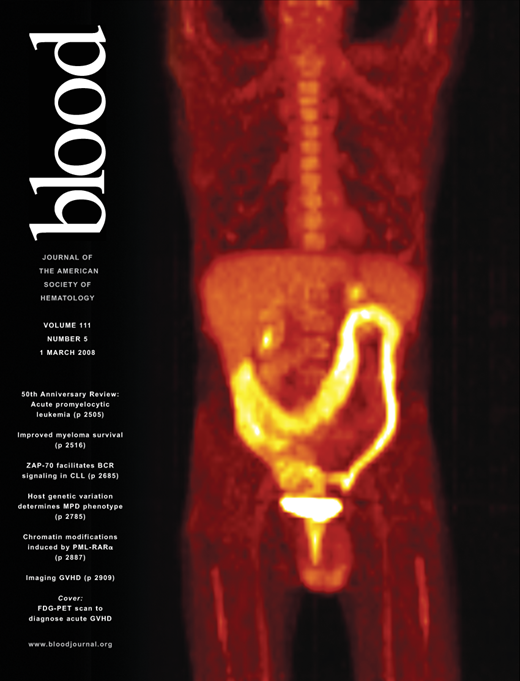Response
We appreciate Drs Artz and Dong's interest in our work,1 and agree that research on the underlying causes of anemia in older adults is needed. A recent study by Semba and colleagues shows that older disabled women with anemia associated with renal disease or anemia of inflammation are significantly more likely to die compared with those who are nonanemic; however, no elevated risk of death was observed in those with anemia associated with nutrient deficiency or unexplained/idiopathic anemia.2 Although causes of anemia could not be determined directly in the Health, Aging, and Body Composition Study (Health ABC), World Health Organization (WHO)–defined anemia was associated with increased mortality risk in blacks who had renal disease and in blacks who had diabetes. These data suggest heterogeneity in risk for adverse outcomes in older adults with anemia and support the need for further investigation of the causes of anemia in larger, racially diverse cohorts of older adults.
Drs Artz and Dong also expressed concern about recruitment procedures and missing data in the Health ABC. All functionallyable blacks within geographic target areas were sampled and recruited for the study, while a proportion of whites were randomly sampled. Oversampling of minority groups is a common practice used in many cohort studies because of the relatively smaller number and proportion of minorities in some regions. Regarding missing data, in response to this letter, we examined mortality in those who were excluded from our study because they did not participate in the year-3 clinic visit when hemoglobin concentration was measured. As expected, mortality rates were significantly higher in black and white participants missing hemoglobin data compared to those with hemoglobin information. Because the proportion missing from the black enrollees is almost twice that of the whites (20.5% vs 11.8%), it is possible that this could have led to an underestimation of the effects of anemia in blacks. Other important prospective studies on anemia in older adults had missing data as well,2,–4 including the study referenced by Drs Artz and Dong where more than 50% of the original cohort were missing hemoglobin information.3 Differences in overall disease burden may account for differences in our study findings and those reported by Denny and colleagues.3
Finally, we believe that epidemiologic studies can make valuable contributions in understanding the implications of abnormal health conditions. Epidemiologic studies have been key to defining risk thresholds for several conditions, including diabetes, hypercholesterolemia, and hypertension. The WHO criteria for anemia, established in 1968, were based on hemoglobin distributions from relatively small studies that did not account for race or health status. Over the past few decades, several population-based studies have demonstrated significantly lower hemoglobin concentration in blacks compared with whites, and there has been discussion of race-specific criteria for defining anemia.5,–7 Our outcomes-based results are provocative and support reconsideration of anemia cutpoints. However, given our study limitations, we agree that a definitive statement based on our data may have been premature. More outcomes-based research in representative samples of older blacks and in blacks with comorbid conditions, such as diabetes or renal disease, is required before establishing alternative hemoglobin cutoffs. This is particularly needed in the wake of recent findings of potential harm associated with using erythropoiesis-stimulating agents to achieve higher hemoglobin concentration in certain patient populations.
Authorship
Conflict-of-interest disclosure: The authors declare no competing financial interests.
Correspondence: Kushang V. Patel, Laboratory of Epidemiology, Demography, and Biometry, National Institute on Aging, Gateway Bldg, 7201 Wisconsin Ave, Suite 3C-309, Bethesda, MD 20892-9205; e-mail: patelku@mail.nih.gov.
References
National Institutes of Health

